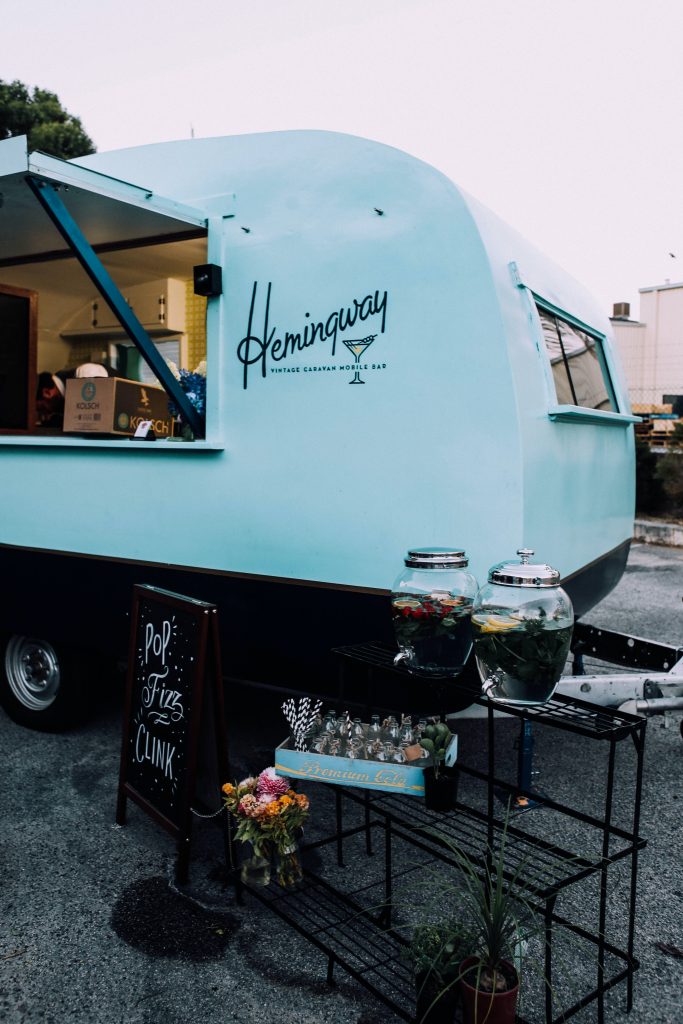How to Start a Food Truck Business

Do you want to start your food truck business? If so, you are in luck. It is an exciting time to get into the food truck industry. The market is increasing, and there are many opportunities for entrepreneurs willing to work hard. The following tips will help you get started in a relatively short period and give you all you’ll need to know about starting a food truck business. We’ll go through ideas for pickings, locations, and menus, so whether you have already established them but run into a roadblock. Choosing A Concept One of the first things you’ll have to resolve is the type of cuisine you’ll provide. Consider when choosing a concept from your interests and skillset to the needs of your local market. For example, do you have experience in a particular cuisine that you’re passionate about? Is there a demand for that type of food in your city? Are there already a lot of other trucks serving similar dishes? Of course, even if you have a great concept, starting a food truck business is no easy task. In addition to finding the right location and outfitting your truck with commercial-grade kitchen equipment, you’ll also need to obtain the necessary permits and licenses. But with careful planning and hard work, you can turn your food truck dream into a reality. Finding A Location Finding the correct location is essential to starting a food truck business. The site should be in a high-traffic area with plenty of foot traffic. Street corners near busy intersections are ideal, as are locations near public transit stops and office buildings. Food trucks should also avoid being too close to other food trucks, creating competition for customers. After identifying a few prospective sites, obtaining the appropriate city permissions is critical. It will ensure that you are operating within the law and that your truck will not be towed or fined. Once you have booked a permit, you will be ready to begin using your food truck business. Preparing Your Menu Considering starting a food truck company, now is the time to do it. One of the first things you’ll need is to develop a menu. It may seem not easy, but it’s not if you keep a few things in mind. Think about what kind of food you want to serve. Do you want to specialize in a particular cuisine or offer a more eclectic mix? Once you’ve decided on your overall concept, start brainstorming specific dishes. R member that your menu should be concise, showing only a few essential items quickly and easily. Otherwise, you’ll risk holding up customers and losing business. In addition, make sure to factor in the cost of your ingredients when developing yo r menu. After all, you’ll need to generate enough revenue to cover your expenses and turn a profit. By keeping these considerations in mind, develop a menu to help your food truck business thrive. Promoting Your Food Truck After you have your food truck business up and running, you will need to let people know you exist! There are a few different ways to promote your food truck. One way is to distribute flyers in busy areas or near other businesses where potential customers might be looking for a quick bite. You can also post your business on social media platforms like Facebook or Twitter. Use relevant hashtags so that people in your area can easily find you. You may also establish a website or blog for your business and utilize SEO techniques to ensure that potential consumers can locate you when searching online for food trucks in their region. You may attract new clients and maintain your restaurant by investing some effort in promoting it. Managing Your Finances Any business requires careful financial management, and a food truck business is no different. Before you get started, you need to understand your expenses clearly. It includes t e cost of the truck and the food and ongoing expenses like insurance, licenses, and permits. It will help if you also know how you will price your food. Once you have a handle on your expenses, you can start to develop a budget and track your progress over time. To keep your finances in order, it’s also essential to stay organized and keep good records. It means maintaining accurate invoices and receipts for all of your expenses by vi citing on top of your finances from the beginning. Building A Solid Team A food truck business is only as strong as its team. It is essential to build a group of hardworking and dedicated employees. The first step is to find individuals with the right skillset. Look for individuals who are passionate about food and customer service. In addition, they should be able to work under stress and in a fast-paced environment. Once you have assembled a team of qualified individuals, it is essential to provide them with the training they need to be successful. Demonstrate to your kids how to prepare meals quickly and effectively by teaching them the ins and outs of your cuisine. It is also vital for a sense of teamwork and camaraderie amongst employees. By working together, they will be able to provide customers with an enjoyable dining experience and make your food truck a success. Dealing With Challenges And Setbacks Food truck businesses are becoming increasingly popular, but they are not without challenges. One of the biggest challenges is finding a prime location. Successful food trucks and to be located in high-traffic areas with easy access to parking and potential customers. However, these desirable locations are often difficult to come by, and many food truck owners find themselves dealing with regular scheduling changes and competing for limited spaces. Another common challenge faced by food truck businesses is terrible weather. While some customers may be willing to brave the cold or rain for a delicious meal, others will stay home, leaving food trucks struggling to make ends meet. Despite these difficulties,
How To Start A Coffee Business

You can be delighted with your coffee shop if you plan it correctly. However, before starting a business selling, coffees do some homework first. So, whether just getting started or wanting to take things to the next level, there’s probably something for everyone here because no one knows better how these drinks are made than those who adore them most. Coffee is a craft, and like any other artist, the best baristas continue to learn and develop. That is why we’ve compiled this tutorial on how to begin a coffee company. It includes everything from choosing the right equipment and ingredients to designing your shop and marketing your brand. Choosing the Right Equipment for Your Coffee Business One of the most important decisions you’ll make when starting a coffee business is what type of equipment to use. There are three main brewing methods: drip coffee makers, espresso machines, and pour-over brewers. Each has advantages and disadvantages, so make your selection according to your objectives and financial constraints. Drip Coffee Makers The most popular machine today is the dripper. Water is heated to a certain level then sent through ground coffee before reaching your cup or travel mug. The result is typically a smooth brew with less acidity than other methods like espresso or French press brewing and more flavor. Its larger surface area makes contact between hot water and bean grounds during brewing time (about 30 seconds). Espresso Machines Espresso machines use high-pressure steam from either an electric element or gas burner source to extract coffee oils from finely ground beans producing robust flavors in small amounts – just enough for one shot per cup. A typical espresso machine can make up two shots at once depending on size though some commercial machines can pump out up to sixteen per minute. Pour-Over Brewers Pour-over brewers are a newer type of coffee maker growing in popularity, and they work by slowly dripping hot water over a bed of ground beans using either a cone or flat-bottom filter. This brewing method produces a balanced cup with more sweetness and acidity than drip coffee makers but a more petite body and bitterness than espresso. It also takes slightly longer to brew (about four minutes). Choose The Right Coffee Beans The first step to starting a coffee business is choosing the right beans. Many different roasts are available, each unique flavor profile and brew method. When it comes to the beans, there are a few things that you should consider. First off is variety in taste and aroma, depending on where they’re grown and what type/level of roast they produce. For example, French Roast coffees tend to have more bitterness than other varieties. In contrast, Medium Dark has been noted by some people who enjoy this flavor profile because of its more robust yet still smooth tasting rating. Next up, we have brightness or sweetness. Canadians favor their morning cup medium sweet, whereas Americans typically prefer theirs bland. Choose Where You Want to Sell Your Coffee The next step in starting a coffee business is figuring out where to sell it. You may have already decided on an existing location or perhaps found one through research online, but there’s still plenty more work ahead before opening day arrives (and not just locking down supplies). – How much traffic does the location get? – What is the surrounding environment like (i.e., residential, commercial, etc.)? – Is there enough space for your coffee machines and seating? – Will you need to modify the space in any way? Create A Shop Design That Reflects Your Brand Your coffee business needs an inviting and professional atmosphere if you want customers to stick around. It means designing your shop with your target market in mind – whether it’s young urbanites or busy professionals – and creating a warm, welcoming environment where they can relax and enjoy their drinks. For The Best Taste Use a French press or espresso machine to brew your coffee. Brewing coffee using a French press or espresso machine will give you the best flavor possible. These methods use pressure and heat to extract the most flavor from the beans, resulting in a richer and more complex cup of coffee. We recommend trying out different brew methods to see what you like best if you’re starting. The best way to ensure that your coffee tastes excellent is by roasting it yourself. You can buy beans already roasted and ground, but they come at a price: the flavor profile isn’t as rich or consistent because of how long they’ve been sitting around waiting for their turn on shelves. Ingredients For Coffee Businesses Once you’ve chosen the right equipment for your coffee business, it’s time to start stocking up on ingredients. Arabica, Robusta, and Liberia are the three most common types of coffee. Arabica coffee is the most common type and has a smooth, delicate flavor. Robusta coffee is harder to find but has a slightly more bitter taste. And Liberia coffee is the rarest, with a sweet and heavy-bodied flavor. There are multiple methods to prepare it, but the most popular include black or half-and-half with milk and sugar. Serve your coffee with a grin and let your consumers know how grateful you are for their business, no matter which way you want it. In addition to coffee beans, you’ll also need milk, sugar, syrups, and creams to create your signature drinks. Before opening day, stock up on these products so that your customers have a wide range of options. Marketing Your Coffee Business Now that you’ve covered the essentials, it’s time to start promoting your coffee company. There are many different ways to do this, so choose those that fit your budget and target market. When compared to other companies, your coffee shop has a variety of options for promoting itself. You might try posting on social media or distributing flyers/posters, However, while it may be much more difficult to dictate the terms of our
